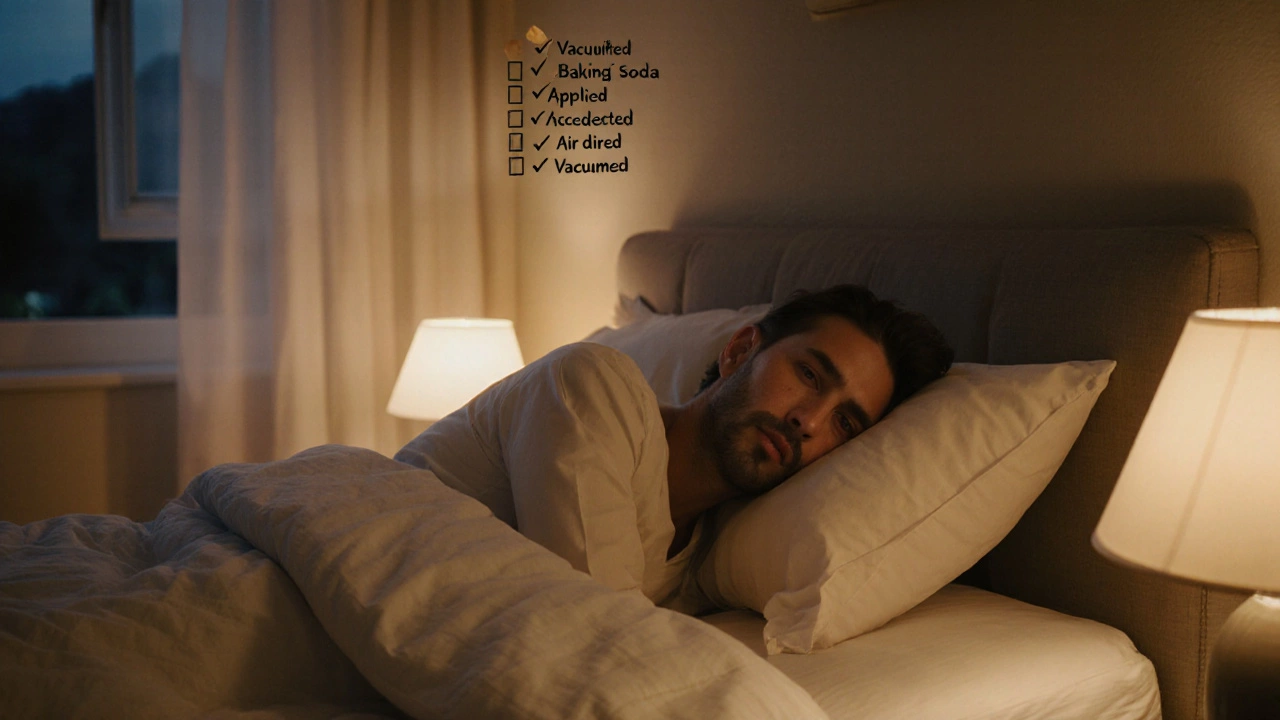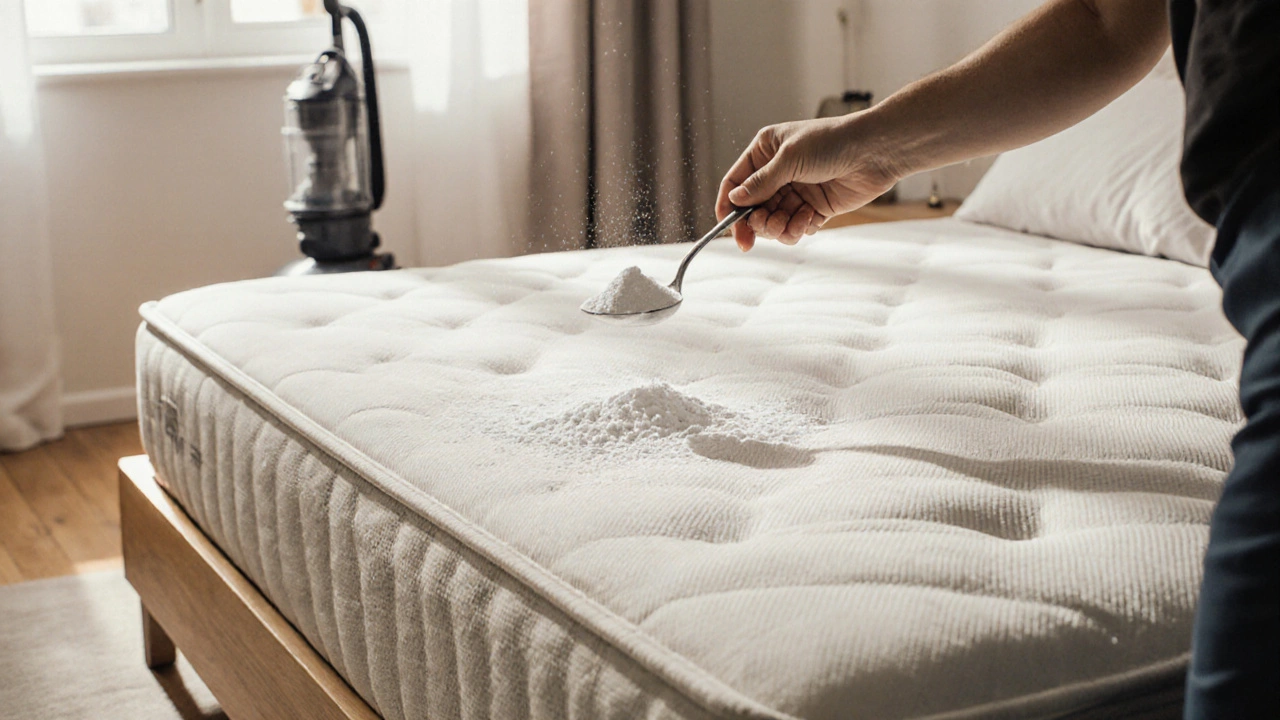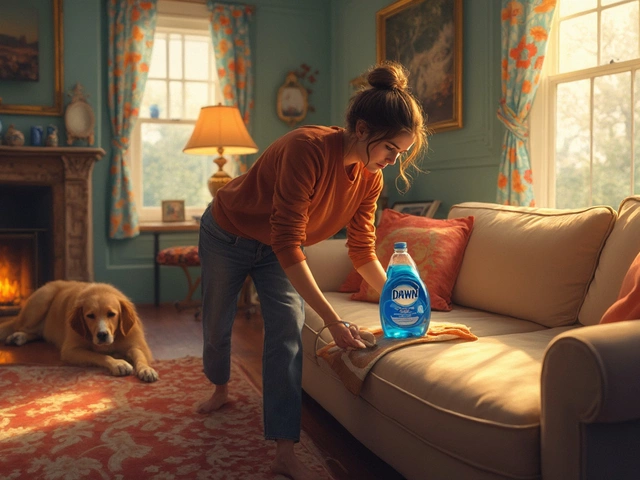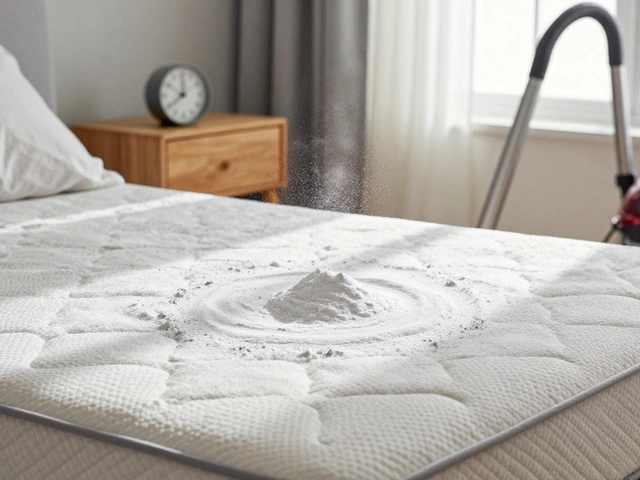Natural Mattress Freshener Selector
Select the type of odor or issue you're dealing with to find the best natural freshening method for your mattress.
Recommended Method
Key Ingredients:
Effectiveness:
Time Required:
Best For:
Cost:
Tip:
Please select an issue to see the recommended method.
How to Use This Tool
- Select your mattress odor issue from the dropdown
- View the best natural method for your situation
- Follow the recommended method to freshen your mattress
When a Mattress is a large, fabric‑covered bed support that collects sweat, skin cells and indoor pollutants over time starts to smell, you don’t need harsh chemicals or pricey services. In fact, a couple of pantry staples and a little patience can give you natural mattress freshening results that rival store‑bought spray cleaners. Below is a step‑by‑step guide that lets you breathe new life into your bed without harming the planet or your health.
Why Choose Natural Methods?
Traditional mattress deodorizers often contain synthetic fragrances, petroleum‑based solvents, or bleach, which can irritate sensitive lungs and degrade the mattress fabric. Natural alternatives work by neutralising odours at the chemical level, breaking down the organic matter that fuels them. They also tackle dust mites and allergens - the hidden culprits behind stale smells.
Gather Your Eco‑Friendly Toolkit
- Baking Soda - a mild alkaline powder that absorbs moisture and odour.
- Essential Oils (lavender, eucalyptus or tea tree) - natural antiseptics with pleasant scents.
- White Vinegar - a weak acid that neutralises alkaline odours.
- Hydrogen Peroxide (3%) - a safe oxidiser for surface grime.
- Sunlight - UV rays that kill bacteria and freshen fibres.
- Vacuum Cleaner with an upholstery attachment.
- Enzyme Cleaner (optional) - for stubborn organic stains.
- Activated Charcoal - a powerhouse absorbent for lingering smells.
Make sure each product is food‑grade or labelled safe for household use. Avoid anything with added dyes or synthetic perfumes.
Method 1: Baking Soda Deodoriser
This is the go‑to trick for most households. Baking soda works overnight and leaves no residue.
- Strip the bed of all linens and let them wash separately.
- Using your Vacuum Cleaner, remove loose dust and hair from the entire surface.
- Evenly sprinkle a generous layer (about 1‑2 cups) of Baking Soda over the mattress.
- Gently rub the powder into the fabric with your hands or a soft brush; this helps it reach deeper fibres.
- Leave it undisturbed for at least 8 hours, preferably overnight.
- Vacuum the mattress again, ensuring all powder is removed.
Result: Neutralised odour, reduced moisture, and a slightly fresher feel.
Method 2: Essential‑Oil Spray
For those who love a fragrant bedroom, an essential‑oil mist adds both scent and antimicrobial benefits.
- Combine 1 cup distilled water, 2 tablespoons White Vinegar, and 10‑15 drops of your chosen Essential Oils in a spray bottle.
- Shake well to emulsify.
- Lightly mist the mattress surface; avoid soaking - the fabric should stay just damp.
- Allow the mattress to air‑dry for 30 minutes before remaking the bed.
Tip: Lavender calms, eucalyptus combats mould, and tea tree fights dust‑mite bacteria.

Method 3: Vinegar‑Hydrogen Peroxide Blend
When you’re dealing with lingering sweat or mild stains, this mild oxidative mix works wonders.
- Mix ½ cup White Vinegar, ½ cup Hydrogen Peroxide (3%), and a few drops of Essential Oils in a spray bottle.
- Test a hidden corner first to ensure colourfastness.
- Spray lightly over the affected area, then blot with a clean cloth.
- Let the mattress dry fully - a fan or open window speeds this up.
Both ingredients break down organic residues without leaving a harsh chemical scent.
Method 4: Sunlight & Airflow
Good old sunlight is a natural disinfectant. UV rays destroy bacteria, while fresh air lifts musty smells.
- On a sunny day, carefully rotate the mattress so the top side faces up.
- Place it near a window or on a balcony where direct sunlight reaches at least 4 hours.
- If weather permits, flip the mattress after the first session to treat the other side.
Beware: Prolonged exposure can fade dark fabrics, so limit to a half‑day maximum.
Method 5: Activated Charcoal Bags
Charcoal is a porous material that pulls odour molecules from the air and the mattress fibers.
- Purchase breathable charcoal bags (often sold for closets).
- Lay 2‑3 bags evenly across the mattress surface.
- Leave them in place for 24‑48 hours; the charcoal will gradually absorb lingering smells.
- Remove bags and vacuum any dust that may have settled.
This method is especially useful for eliminating persistent pet odors.
Quick Comparison of Natural Freshening Techniques
| Method | Key Ingredients | Effectiveness | Time Required | Best For | Cost |
|---|---|---|---|---|---|
| Baking Soda | Baking Soda | High | 8‑12 hrs | General odour | Very low |
| Essential‑Oil Spray | White Vinegar, Essential Oils | Medium‑High | 30 mins | Fragrant finish | Low |
| Vinegar‑Peroxide Blend | White Vinegar, Hydrogen Peroxide | High (stains) | 15‑30 mins | Stains & sweat | Low |
| Sunlight | Sunlight, Air | Medium | 4‑6 hrs | Bacterial control | Free |
| Activated Charcoal | Charcoal bags | Medium‑High (pet odour) | 24‑48 hrs | Persistent smells | Moderate |

Maintenance Tips to Keep Your Mattress Fresh Year‑Round
- Rotate the mattress every 3‑6 months to distribute wear.
- Use a breathable, washable mattress protector; wash it monthly.
- Vacuum weekly to capture dust mites and skin flakes.
- Keep bedroom humidity below 60 %; a dehumidifier helps in damp climates.
- Spot‑clean spills immediately with a dab of Enzyme Cleaner to break down proteins.
Common Pitfalls and How to Avoid Them
Over‑wetting. Saturating the mattress can lead to mould. Always mist, never soak.
Using harsh chemicals. Bleach or ammonia can damage fabric fibers and release toxic fumes.
Skipping the vacuum step. Dust and hair act like a sponge for odour; removing them first makes any freshener more effective.
Quick Checklist Before You Go to Bed
- All linens removed and washed.
- Mattress fully vacuumed.
- Chosen freshening method applied and dried.
- Protective cover placed.
- Room ventilated for at least 15 minutes.
Frequently Asked Questions
How often should I freshen my mattress naturally?
A mild freshening (baking soda or essential‑oil spray) every 3 months keeps odours at bay. Deep treatments like sunlight or charcoal can be done twice a year or when you notice a persistent smell.
Can I use lemon juice instead of vinegar?
Lemon juice is acidic like vinegar and works for light odour removal, but its citrus scent can clash with other fragrances. Vinegar is neutral‑smelling once it dries, making it a safer all‑round choice.
Is it safe to use essential oils if I have asthma?
Pure essential oils can trigger asthma in some people. Dilute heavily (1‑2 drops per cup of water) and test with a small area first. If you’re sensitive, stick to fragrance‑free options like baking soda or charcoal.
Do these natural methods work on memory foam mattresses?
Yes, but be extra careful with moisture. Memory foam absorbs liquid quickly, so keep sprays light and dry the surface thoroughly before allowing the foam to regain its shape.
How can I tell if my mattress is still healthy after cleaning?
A healthy mattress feels dry, springs or foam return to shape instantly, and there’s no lingering sour or chemical smell. If you still notice dampness or mould spots, repeat the drying step or consider a professional inspection.
With these natural tricks in your cleaning arsenal, you’ll keep your mattress smelling fresh, sleeping healthier, and extending its lifespan - all without reaching for harsh chemicals or pricey services.





